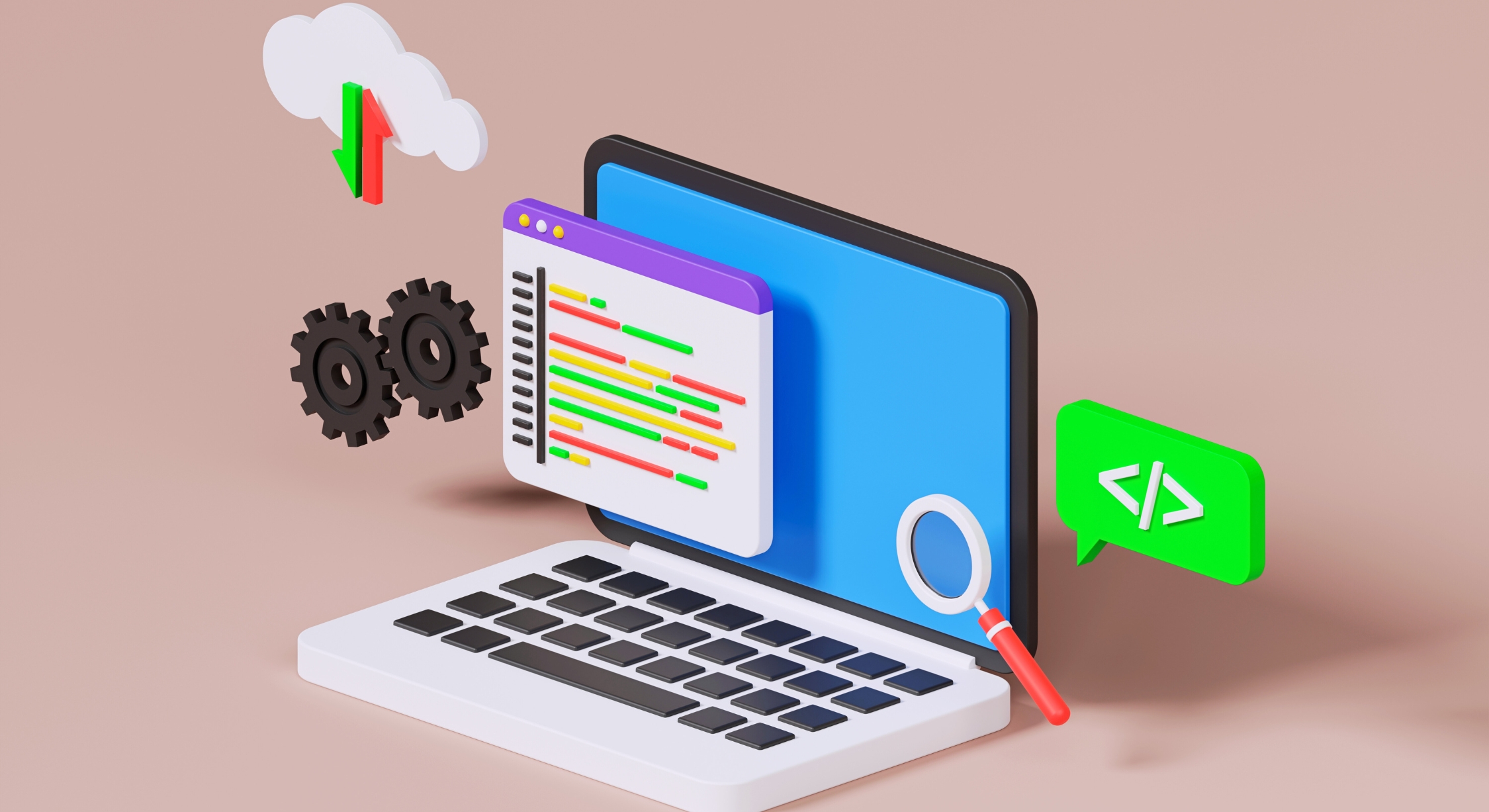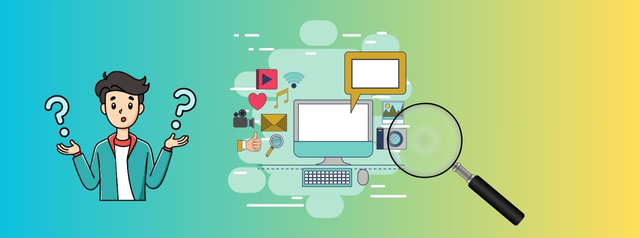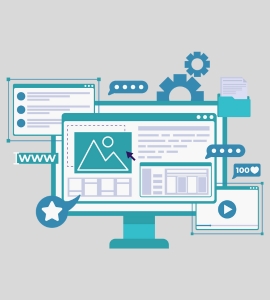Experion is leading the charge in revolutionizing desktop application development, crafting dynamic solutions that drive businesses forward. We understand that the right platform can be a game-changer for businesses looking to innovate and optimize their operations. In a world dominated by web and mobile applications, desktop apps are quietly making a comeback. While it might seem counterintuitive, the demand for desktop applications is growing as businesses and users recognize the unique benefits they bring to the table. But why, in an era obsessed with cloud and mobile, are desktop applications still holding their ground? Let’s explore the enduring appeal of desktop application development and why it’s more relevant today than ever before.
What is Desktop Application Development?

Desktop applications are like the unsung heroes of the software world. Unlike web applications that require a browser or mobile apps confined to your smartphone screen, desktop applications run directly on your computer. They interact intimately with the operating system, allowing them to leverage the full power of your device. Whether it’s Windows, macOS, or Linux, desktop applications are designed to perform a variety of tasks without needing to be constantly online. This means they’re always ready to work, even when you’re off the grid.
Some of the most powerful tools we use every day are desktop applications. Imagine working without Microsoft Word to craft documents, or trying to design without Adobe Photoshop. And let’s not forget the sheer convenience of watching videos on VLC Media Player, which handles virtually every file format you throw at it. These aren’t just apps—they’re powerhouses that have defined productivity and creativity for decades.
Key Differences Between Desktop, Mobile, and Web Applications
Platform & Installation
Desktop applications are meticulously crafted for specific operating systems—be it Windows, macOS, or Linux—and require installation directly on your device. This installation process, although sometimes perceived as cumbersome, is actually one of the key strengths of desktop apps. Unlike web applications that run within browsers or mobile apps that are confined to the limited real estate of smartphones and tablets, desktop applications offer unparalleled integration with your system.
By being rooted in the operating system, desktop applications can access hardware resources more effectively, enabling advanced functionalities like real-time data processing and complex graphical rendering. This deeper integration also translates to enhanced offline capabilities. Need to run a data-heavy simulation on a remote project site without internet access? A desktop app has you covered. In contrast, web applications falter without connectivity, and mobile apps often struggle with limited processing power and storage.
This installation process also allows desktop applications to deliver more sophisticated user experiences. Whether it’s a designer working on a complex 3D model or a financial analyst crunching vast datasets, the power and flexibility of desktop applications ensure users can operate without constraints, right from their workstations.
Performance & User Experience
When it comes to sheer performance, desktop applications are in a league of their own. They can tap into your device’s full CPU and GPU potential, making them the go-to choice for resource-intensive tasks. Whether you’re rendering high-definition video, running sophisticated machine learning algorithms, or engaging in an immersive gaming experience, desktop applications offer the muscle needed to get the job done without compromise.
Moreover, the user experience of desktop applications is tailored for efficiency and precision. No more squinting at tiny screens or battling sluggish performance due to network limitations. Instead, users enjoy a responsive interface that feels smooth and intuitive, with the power to handle anything from intricate design work to heavy-duty data crunching. Think of it as the difference between driving a compact car and a high-performance sports vehicle; both will get you from point A to point B, but the experience is worlds apart.
Why Choose Desktop Application Development?

- Performance: Desktop applications can fully harness the computing power of your device. This is why most creative and enterprise software, from CAD tools to financial modeling programs, are desktop-based. They deliver unmatched speed and efficiency, handling everything from 3D rendering to real-time data processing without breaking a sweat.
- Offline Functionality: Not all applications need to be connected 24/7. Imagine losing your internet connection halfway through editing a video or designing a logo. Desktop apps don’t let that happen. They store data locally, ensuring that you can continue your work without interruption, whether you’re in a coffee shop or on a flight.
- Security: Desktop applications run in a more controlled environment compared to web applications, which are exposed to a wider range of vulnerabilities. With robust encryption and access controls, they offer an added layer of security, making them ideal for sensitive business operations.
Business Use Cases
While web and mobile apps have their place, there are scenarios where desktop applications are the undeniable choice:
- Enterprise Software: Large-scale operations, data analytics, and integrated systems often require the power and stability that only desktop applications can provide.
- Creative Tools: Graphic designers, video editors, and animators rely on desktop apps for their advanced features and seamless performance.
- Data-Intensive Applications: Financial modeling, scientific simulations, and big data processing are best handled by desktop apps, where performance and data integrity are paramount.
Popular Frameworks and Tools for Desktop Application Development
When it comes to building powerful desktop applications, choosing the right framework is crucial. Each platform has its own set of tools and libraries that offer unique advantages, from stunning user interfaces to seamless cross-platform capabilities. Let’s dive deeper into some of the most popular frameworks that make desktop application development not just feasible, but incredibly efficient and engaging.
Windows Presentation Foundation (WPF)
Windows Presentation Foundation (WPF) is the flagship framework for developing visually sophisticated desktop applications on the Windows platform. Launched by Microsoft, WPF is built on top of the .NET framework and is known for its ability to create applications with stunning UIs and interactive experiences.
Key Features:
- Rich UI Capabilities: WPF allows developers to create visually compelling applications with support for 2D and 3D graphics, animations, and complex user interface elements like data grids and charts.
- Scalability: It uses a vector-based rendering engine, which means your applications look crisp and professional on any screen resolution, making it perfect for high-DPI displays.
- Data Binding and MVVM: WPF’s robust data-binding feature, combined with the Model-View-ViewModel (MVVM) pattern, enables a clean separation between UI design and business logic, enhancing code maintainability and scalability.
Use cases: WPF is ideal for applications that require high interactivity and complex graphical interfaces, such as enterprise resource planning (ERP) systems, financial analytics tools, and multimedia applications.
Electron.js
Electron.js has revolutionized desktop application development by making it possible to use web technologies like HTML, CSS, and JavaScript to build cross-platform desktop applications. It bridges the gap between web and desktop, allowing developers to create robust, native-like applications using familiar web development skills.
Key Features:
- Cross-Platform Compatibility: With Electron.js, you can build applications that run seamlessly on Windows, macOS, and Linux with a single codebase, reducing development time and costs.
- Access to Native APIs: Despite using web technologies, Electron apps can access native system functionalities like file handling, notifications, and more, offering the best of both worlds.
- Developer-Friendly: Electron’s large ecosystem of libraries and tools, combined with Node.js integration, makes it a powerful platform for creating sophisticated applications with advanced backend capabilities.
Use Cases: Electron.js is perfect for creating applications that require a consistent experience across multiple operating systems, such as collaborative tools (Slack), code editors (Visual Studio Code), and content management systems.
Cocoa
For developers looking to create native macOS applications, Cocoa is the go-to framework. It is the backbone of macOS development, providing a comprehensive set of APIs that enable developers to create applications that feel right at home on Apple devices.
Key Features:
- Deep System Integration: Cocoa provides native access to macOS features like the Dock, menus, and Finder integration, allowing developers to create applications that are intuitive and consistent with the macOS ecosystem.
- User Interface Flexibility: Using the Interface Builder and Swift programming language, developers can craft highly polished, responsive interfaces that align with macOS design standards.
- Robust Performance: Cocoa applications are optimized for the macOS hardware and software stack, ensuring smooth performance, efficient memory usage, and fast execution.
Use Cases: Cocoa is ideal for building macOS-exclusive applications such as graphic design software, audio and video editing tools, and productivity applications that benefit from macOS-specific features.
QT
QT is a versatile, cross-platform framework used for developing desktop, mobile, and embedded systems applications. It is renowned for its flexibility and is widely used in industries where performance and stability are critical.
Key Features:
- Cross-Platform Development: QT allows developers to write applications once and deploy them across various platforms, including Windows, macOS, Linux, iOS, and Android, with minimal code modifications.
- High-Performance Graphics: QT’s robust graphics engine supports complex UI components and high-performance rendering, making it a preferred choice for applications that require detailed visualizations, like CAD tools and industrial automation systems.
- Extensive Functionality: With an extensive range of libraries, QT supports a broad spectrum of functionalities, from database access and networking to multimedia and XML processing.
Use Cases: QT is particularly favored in industries such as automotive, healthcare, and manufacturing, where applications must run reliably across different hardware configurations and operating systems.
The Development Process

Building a successful desktop application is much more than just writing code. It involves a structured approach that ensures every aspect of the application, from user experience to performance, is meticulously planned and executed. At Experion, we follow a robust development process that covers every phase in detail, ensuring that the final product not only meets but exceeds client expectations.
Planning & Requirement Gathering
Every successful application starts with a well-thought-out plan. During planning and requirement gathering, the focus is on understanding the purpose of the application, the problems it aims to solve, and the target audience it will serve. This helps in mitigating risks and ensures smooth project execution. Here’s how it is done:
- Stakeholder Interviews: We begin by engaging with key stakeholders—clients, end-users, and project managers—to gather insights into the business needs and expectations. This helps in defining the scope of the project and setting clear, measurable goals.
- Requirement Analysis: This step involves translating business needs into technical specifications. We document all functional and non-functional requirements, including features, performance criteria, and security considerations.
- Technical Feasibility Study: Here, we assess the technical challenges and identify the tools, frameworks, and resources required. This ensures that we choose the most effective technology stack that aligns with the project’s goals and constraints.
- Project Roadmap: Based on the gathered requirements, we create a detailed project plan that outlines milestones, deliverables, and timelines. This roadmap serves as a guide throughout the development process, keeping the team aligned and focused.
Designing the User Interface
The User Interface (UI) is the face of your application—it’s the first thing users see and interact with. A well-designed UI is crucial for creating a positive user experience and ensuring that your application is intuitive and easy to use. Here’s how we approach UI design:
- Wireframing and Prototyping: Using tools like Sketch, Figma, and Adobe XD, we create wireframes that outline the basic structure and flow of the application. This step allows us to visualize the layout, navigation, and functionality before committing to a final design.
- User-Centric Design: We prioritize user needs and behaviors by conducting user research and usability testing. This ensures that the design is not only visually appealing but also functional and accessible. Elements like buttons, menus, and forms are designed to be intuitive and easy to interact with.
- Consistency and Branding: We ensure that the UI reflects the brand identity of the client, maintaining consistency in color schemes, typography, and visual elements. This helps in building a cohesive user experience and reinforcing brand recognition.
- Responsive Design: Although desktop applications primarily run on larger screens, we ensure that the design adapts to different screen sizes and resolutions, providing a seamless experience across all devices.
At Experion, our design team collaborates closely with clients to create UI designs that not only look great but also enhance usability. We believe that a well-designed interface can significantly improve user engagement and satisfaction.
Implementing Core Functionality
This is where the real magic happens—the point where ideas and designs are transformed into a functional application. Implementing core functionality involves building the backbone of the application, focusing on performance, reliability, and scalability. Here’s how we tackle this phase:
- Choosing the Right Architecture: We select an appropriate architectural pattern—whether it’s MVC (Model-View-Controller), MVVM (Model-View-ViewModel), or Microservices—based on the complexity and requirements of the application. This ensures a robust structure that supports future scalability and maintainability.
- Programming Paradigms: Depending on the project, we employ different programming paradigms such as Object-Oriented Programming (OOP) for modularity and code reuse, or Functional Programming for handling complex data transformations efficiently.
- Database Design and Integration: We design efficient database schemas that support the application’s data management needs. Whether it’s SQL or NoSQL, we ensure optimal data storage, retrieval, and security. Integration with third-party APIs and services is also handled meticulously to ensure smooth interoperability.
- Concurrency and Multithreading: For applications that require high performance and responsiveness, we implement multithreading and concurrency strategies. This ensures that the application can handle multiple tasks simultaneously without lag or crashes.
- Code Quality and Reviews: Our development process includes regular code reviews and adherence to coding standards. This not only improves code quality but also ensures that the application is secure, maintainable, and free of technical debt.
Testing & Debugging
No application is flawless from the get-go. Testing and debugging are essential to ensure that the application runs smoothly and is free from bugs. Our comprehensive testing approach includes:
- Unit Testing: We begin by testing individual components and functions to ensure they work as expected. Automated unit tests help in identifying and fixing issues early in the development process.
- Integration Testing: We test the interactions between different modules to ensure they work harmoniously. This is crucial for applications with complex interdependencies and integrations.
- System Testing: The entire application is tested as a whole, simulating real-world usage scenarios to identify any issues related to performance, usability, or security.
- User Acceptance Testing (UAT): Before deployment, the application is tested by real users to ensure it meets their needs and expectations. Feedback from UAT is used to make final adjustments and improvements.
- Debugging Tools: We use advanced debugging tools like Visual Studio, Eclipse, and specialized profiling tools to identify performance bottlenecks and resolve issues efficiently.
Packaging and Deployment
Once the application is developed and tested, it’s time to package and deploy it for users. This phase involves preparing the application for distribution and ensuring a smooth installation and update experience.
Packaging Tools
Packaging is more than just bundling files—it’s about ensuring that the application is easy to install, use, and update. We use specialized tools for each platform:
- Windows (MSI/EXE): We create MSI or EXE packages that include all necessary files and configurations for installation. Advanced options like silent installation and custom configurations are included for enterprise deployment.
- macOS (DMG/PKG): For macOS, we package applications in DMG or PKG formats, providing a user-friendly drag-and-drop installation experience. We also ensure compatibility with the latest macOS security features like notarization.
- Linux: Packaging for Linux involves creating DEB or RPM files, along with scripts for various distributions. We ensure that dependencies are managed correctly, making installation hassle-free for users.
Deployment Strategies
How and where your application is deployed can significantly impact its success. We offer tailored deployment strategies based on your needs:
- Self-Hosting: Ideal for enterprises that require full control over distribution and updates. We set up secure servers for hosting the application and provide tools for monitoring and managing deployments.
- App Stores: For broader reach, we help clients publish their applications on platforms like the Microsoft Store or Mac App Store. We handle compliance with store guidelines, ensuring smooth approval and listing.
- Enterprise Distribution: For internal applications, we offer secure distribution channels with tools for version control, access management, and automated updates.
Post Launch Maintenance and Updates
The launch of an application is just the beginning. Continuous maintenance and updates are crucial for keeping your application relevant, secure, and aligned with user needs.
Bug Fixes and Iteration
Post-launch, user feedback plays a critical role in identifying areas for improvement. We follow an agile approach to iterate on the application, focusing on:
- Bug Fixes: Prioritizing and resolving any issues reported by users to maintain a smooth and error-free experience.
- Feature Enhancements: Based on user feedback and evolving business needs, we add new features and improve existing ones to enhance functionality and usability.
- Performance Optimization: Regular profiling and optimization ensure that the application continues to perform well as the user base grows and requirements evolve.
Version Control
Managing different versions of your application is essential, especially as it evolves over time. We use advanced version control systems to:
- Track Changes: Every change is documented, ensuring a clear history of updates, fixes, and feature additions.
- Branching and Merging: For larger projects, we use branching strategies to manage different features and releases concurrently, reducing conflicts and ensuring smooth integration.
- Release Management: We maintain a structured release cycle, ensuring that updates are tested and deployed systematically without disrupting users.
Documentation
Comprehensive documentation is vital for both users and developers. It ensures that everyone can make the most of your application, from daily use to troubleshooting and future development.
- User Documentation: We create clear, concise user manuals, FAQs, and guides to help users navigate and utilize the application effectively.
- Developer Documentation: For applications that require ongoing development, we provide detailed technical documentation, including API references, code structure, and best practices.
- Changelog: We maintain a detailed changelog that tracks all updates, bug fixes, and new features, providing transparency and keeping users informed about the evolution of the application.
Best Practices for Successful Desktop Application Development

Code Quality & Security
Good code is the backbone of any application. Regular code reviews, adherence to coding standards, and secure coding practices aren’t just best practices—they’re necessities. They ensure your application is robust, efficient, and secure from the ground up.
Performance Optimization
Performance isn’t just about speed—it’s about the user experience. Use profiling tools to identify bottlenecks, optimize resource usage, and ensure your application runs smoothly, even under heavy loads.
How Experion Helps You in Desktop Application Development
At Experion Technologies, we specialize in building robust, high-performance desktop applications tailored to your business needs. Whether you need a custom enterprise solution or a powerful creative tool, our team of experts is equipped to deliver top-notch applications that drive efficiency and innovation.
Conclusion
Desktop applications may not always be in the spotlight, but their power, performance, and offline capabilities make them indispensable. From creative tools to enterprise solutions, they’re still the preferred choice for many demanding applications. As technology evolves, so too do the possibilities for desktop apps, making them an exciting field for innovation and development.
Key Takeaways
- Desktop applications offer unparalleled performance and security, making them ideal for a range of business scenarios.
- Choosing the right framework and following best practices is key to developing successful desktop applications.
With Experion Technologies, you gain a partner who understands your development needs and delivers solutions that empower businesses to drive efficiency, optimize workflows, and seamlessly integrate with existing infrastructure, if required, thus aligning with their goals.

